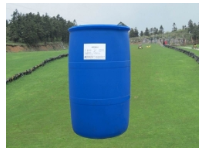A new type of polyol type non sucrose fatty acid esters (SE) is a new type of polyol non-ionic surfactant, which is white or yellowish brown powder, block or yellowish viscous resin. Since the hydrophilic lipophilic equilibrium (HLB) of sucrose fatty acids does not change with temperature, the range of HLB is wide (1-16). Sucrose ester can be used not only as w / O emulsifier, but also as O / W emulsifier. Sucrose ester has good emulsifying, dispersing, solubilizing, penetrating, foaming, viscosity adjusting, anti-aging, antibacterial and other properties. At the same time, it is non-toxic, especially safe to human body, non irritating, degradable, and will not cause environmental pollution. Due to its excellent characteristics, sucrose ester is widely used in food, chemical industry, cosmetics, etc Oil mining, fruit preservation, textile and agriculture industries. Se is a food additive and medicinal material recommended by FAO and who. China also approved the use in the 1980s.

Sucrose is a disaccharide containing three primary hydroxyl groups and five secondary hydroxyl groups. Its molecule is connected by a furan ring and a pyran ring. Under certain conditions, sucrose can dehydrate and condense with eight fatty acids or esters of fatty acids to form octa sucrose ester (SP E). SP E has obvious anti-aging function. It can be used in many kinds of foods to make food emulsifying and stabilizing. It can make milk products produce bacteriostasis and improve the physical properties of baked products, dairy products, oils, beverages, sweets and chocolates, so as to improve the quality of products. In addition to the basic emulsifying function, SP E plays an important role in food processing and quality in terms of stability, thickening, defoaming, anti caking, coating, antibacterial, taste improvement and so on. Now it is widely used in beverage, baking, candy, dairy products, fish processing, frozen food, conditioning food and other products.
Polyglycerol fatty acid ester (PGFE), referred to as polyglycerol ester, is a new type of nonionic surfactant with high efficiency and excellent performance. The food and Agriculture Organization of the United Nations (FAO) and the World Health Organization (who) have confirmed polyglycerol vinegar as a high safety food additive. At present, polyglycerol vinegar is one of more than 30 kinds of food emulsifiers announced by the FAO / WHO Expert Committee on food additives. Polyglycerol vinegar has been approved as food emulsifier by the United States, Japan and Europe. So far, the food industry is the most widely used field of polyglycerides. Its main functions are: emulsification, viscosity adjustment, crystallization adjustment, quality improvement, precision seedling and so on.
Polyglycerol vinegar can not only improve the viscosity of starch, but also prevent the aging of starch. Therefore, it can be used to improve the quality of starchy food. It can be used as flour improver and emulsifier. After adding polyglycerol vinegar, the texture structure of bread or biscuit can be effectively improved, oil and fat leakage can be prevented, and the product quality can be improved. It can also be made into cake foaming agent, which can help to stir and froth, produce cake and pastry with fine structure, significantly increase volume, and prolong the fresh-keeping period of products. For example, decaglycerin monolaurate has anti-aging effect on starch, improves the processing quality of bread and snack food, reduces starch viscosity and improves impact resistance; in the process of dough rejuvenation and batter preparation, it increases aeration volume to make pores uniform and increase baking volume, at the same time, it can make oil, water and sugar disperse more evenly in the dough, make bread soft and improve its quality Flavor and chewiness. Other effects of polyglycerol on these starchy foods are still under study. Ionic surfactant